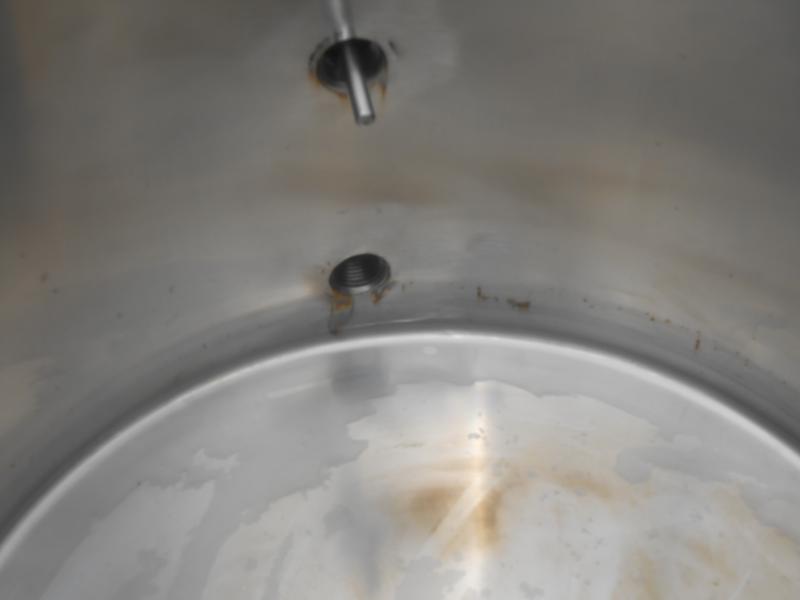So some of my equipment order came in today. I couldn't wait to to test it out, so I threw one of my new stainless steel pots onto the range, filled it with about 5G of water, and fired it up to see how fast I could bring it to a boil. (the answer: 2.5f/min temp raise) But!!!! After it boiled and I looked inside, what do I see? RUST?


This is a brand-new, just-unboxed 9gal 2-weld stainless steel pot. I'm sure I'm not the only one with it - seems to be a very common item across many brew supply websites.
That very rusty-looking residue was not present when I unboxed it but after a boil (took about 35 minutes) there it is. What gives? The two rust rings around the weld look horrible too.
Can someone help? Is it possible to prevent this rust from showing up in future? Should I scrape it off with a brillo pad?


This is a brand-new, just-unboxed 9gal 2-weld stainless steel pot. I'm sure I'm not the only one with it - seems to be a very common item across many brew supply websites.
That very rusty-looking residue was not present when I unboxed it but after a boil (took about 35 minutes) there it is. What gives? The two rust rings around the weld look horrible too.
Can someone help? Is it possible to prevent this rust from showing up in future? Should I scrape it off with a brillo pad?










![Craft A Brew - Safale BE-256 Yeast - Fermentis - Belgian Ale Dry Yeast - For Belgian & Strong Ales - Ingredients for Home Brewing - Beer Making Supplies - [3 Pack]](https://m.media-amazon.com/images/I/51bcKEwQmWL._SL500_.jpg)















































